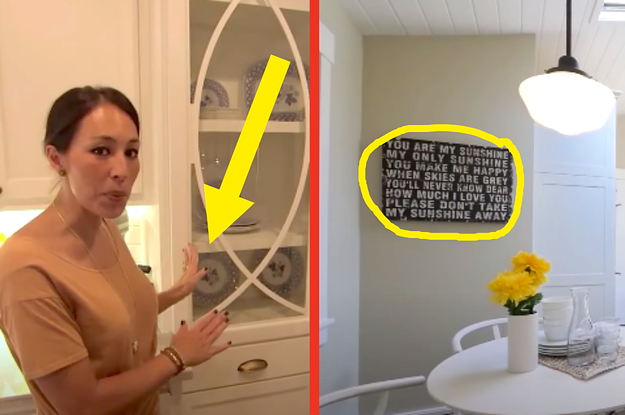Even when she was a 9-year-old, recently arrived to Nevada from Mexico with her family, Liz Aguilar knew she was going to college. She told her parents that she didn’t care about having a quiceñera, the big coming-of-age celebration that Latino families host when a girl turns 15. Put that money away for college, Aguilar told them.
So the quiceñera never happened. But neither did the college fund.
Aguilar had a secret she was holding close, one that made her college dream seem more impossible the nearer she got to high school graduation.
She was undocumented.
It was before the Obama administration introduced the Deferred Action for Childhood Arrivals program (DACA for short) in 2012 that gave some immigrants who were brought to the U.S. as children protection from deportation, along with permission to work and go to college.
“Once I graduate, I’m terrified. I’m seeing how much my parents have struggled, and I have no idea what I’m going to do,” Aguilar remembers.
Luckily for Aguilar, two things happened shortly after. First, her high school sports coaches felt she had potential to do well in college, both academically and as an athlete, and they went to work guiding her through the admissions process (more on that later). Second, unbeknownst to them, Aguilar applied as soon as she could when the Department of Homeland Security initiated the DACA program in summer 2012.
Aguilar eventually took part in Teach for America, and she still teaches at the high school where she got her start, working with students who have recently arrived in the country.
Eleven years later, she now finds herself in an uncanny position.
Aguilar has become a sounding board for immigrant students who, because they lack permanent legal status in the U.S., face the same hopeless post-graduation outlook that she had as a teenager. People in this situation often identify as “undocumented,” referring to the fact that they don’t have official forms granting them permission to live in the country.
Aguilar is one of about 15,000 teachers in the U.S. who are undocumented but are able to work thanks to DACA protection, granted before the policy entered legal limbo most recently in 2021. They now are becoming mentors to students whose lives look much like theirs did more than a decade ago — except now the hope of relief from a policy like DACA is dim even among its proponents. A federal judge is mulling over the program’s legality, and new applications haven’t been accepted for the past two years.
So for now, Aguilar advises these students as best she can.The teacher helps with their practical questions, like how to pay for higher education. She also listens with empathy as they express their fears.
“They say, ‘Miss, I don’t know what to do, I’m scared, I don’t even know if I can go to college,’” Aguilar says.
Stuck in Limbo
In a recently released report, immigration advocacy organization FWD.us led with a startling figure: Most of the 120,000 high school students living in the country without legal permission who are graduating this year are ineligible for DACA.
That’s not just because new applications have been paused.
DACA has several time-related constraints that limit who is eligible for its protection. One of those requirements is that applicants must have “continuously resided in the United States since June 15, 2007.”
It’s been almost 16 years since that cutoff date, which was before many of the estimated 600,000 young immigrants lacking permanent legal status who are now enrolled in U.S. public schools were born.
So to qualify for DACA, this year’s high school seniors needed to have arrived in the U.S. before they were 2 years old.
“But now, only a fifth of this year’s undocumented high school graduates would be eligible for immigration relief through DACA under current rules,” the report says. “By 2025, no undocumented high school graduates will be eligible for DACA under current rules.”
Some of those students are in Aguilar’s classroom now. They have the same question after learning that she went to college after receiving DACA protection: “How did you do it?”
I’m not afraid to share with my students about my status, because growing up I felt like I couldn’t share that with anybody.
“Typically the way this conversation starts is I’m not afraid to share with my students about my status, because growing up I felt like I couldn’t share that with anybody,” Aguilar says. “I want you to know I can help you figure it out.”
While Aguilar faced hurdles on her own path to college, she found herself with advocates after she ran track her senior year of high school and impressed the coaches with her talent.
“They saw potential in me, but they didn’t know I was undocumented,” Aguilar says. “They introduced the idea of going to college and competing, but I was like, ‘I can’t do that.’”
That changed after she was granted DACA protection, and her coaches helped her make her way to community college, offering support through the application process, figuring out how to finance her studies and even which classes to choose. She went on to earn her bachelor’s degree in history and then her master’s degree in curriculum and instruction with a focus on English language arts.
One thing Aguilar never tells her students is that the process of going to college will be easy. But even after they leave her class, she’s still in their corner — just like the educators who were by her side in high school and beyond.
“It’s going to be twice as hard as anybody else, but it’s possible, and I am the walking definition of it,” she tells her students. “I still have students from three years ago, and we’re still figuring it out together.”
A Teacher Who Understands
José González Camarena is a former middle school teacher with Teach for America and, like Aguilar, grew up undocumented in the U.S. He’s now the senior managing director of the Teach for America Immigration and Education Alliance.
González Camarena says that roughly 400 educators with DACA protection have gone through the teaching program since 2013. Some doubt whether they have a future in teaching — or any profession.
“I hear this from a lot of the educators, and I experienced this myself, thinking, ‘I’m getting this degree to what end? What am I going to do?’” he says. “Some of those same sentiments that Liz was sharing, a lot of college students feel that now with the context of DACA. I think it’s incumbent on all of us in the education space to share what those opportunities are.”
Nevada is one of the states, González Camarena explains, where a person lacking permanent legal status can get their teaching license even without DACA protection. While they can’t be hired directly by a school district, they can work as an independent contractor.
If González Camarena is passionate about sharing the options that are still available for students and educators living in the U.S. without legal permission, it’s perhaps because — like Aguilar — he was once one of those students who graduated high school before the launch of DACA. Even as a teen in California at the time, which allowed students like him to pay in-state tuition rates, the cost put college out of reach for him and his family.
And again, like Aguilar, a twist of fate changed his plans.
“Completely by luck, I came across a blog of undocumented students who were sharing their [college] experiences anonymously online,” he recalls, “and I applied to three private schools because I heard stories of undocumented students at those institutions.”
One of those schools, the University of Pennsylvania, offered González Camarena a full scholarship. It’s there that he earned his bachelor’s degree in economics from the Wharton School.
While he was working as a sixth and seventh grade math teacher, the Trump administration made its first attempt to end DACA. Some of his students feared at the time that such a move would harm their families and, today as young adults, some have been unable to enroll in the program themselves. (González Camarena is a former DACA recipient and has since gained residency.)
“In those years in particular it was important for me to share community resources, know-your- rights workshops, equipping them with the basics of, ‘You may be undocumented, your status may be XYZ, but you still have rights,’” he says. “I think those conversations should be happening a lot earlier than middle school with students and parents.”
Having a teacher with firsthand experience navigating these challenges can make a big difference because students can feel hesitant to take those questions to parents, who are immigrants themselves and can find the college application process just as daunting as their children.
“They don’t want to put that pressure on their parents or make them feel a certain way because they made sacrifices to come to this country,” Aguilar says. “You have that stress of being undocumented, and then you have the other stress of — your parents are not necessarily able to help you with [college] either.”
Aguilar says she feels fortunate that her students feel comfortable enough to approach her with not just questions about college but also bigger-picture inquiries about “how can they accomplish their dreams.”
Paying It Forward
When recalling their own experiences as high schoolers, the emotions that Aguilar and González Camarena describe are painful.
A time full of anxious excitement for so many teens was, for them, full of dread. Like stepping out on a cliff in the fog, not knowing whether their feet would land on a bridge or slip into empty space.
What the pair describe, even a decade or more removed from their experiences, feels overwhelming. Even claustrophobic.
“Thinking back to it, I was a very depressed teenager, and it had a lot to do with my status,” Aguilar says. “Even now I’m almost 30, and there’s never been a sense of security. I don’t know what’s going to happen to me, and that’s why in high school I used to think, ‘Look at how successful I’ve been in running, but why does this matter?’ That’s all I can think of, ‘There’s nothing there.’ It was just a very sad time for me.”
Today, many students in this situation — or those with DACA protection, at least — are more outspoken about their immigration status. Indeed, it seems like an essential part of their advocacy.
But the undocumented teens that Aguilar mentors are just that — teens. Just as she did in high school, they can feel powerless over the future.
Aguilar thinks of one student she coached in volleyball this past school year, who had set a goal of going to college or becoming a certified HVAC technician. Those plans have been stalled because although he applied to the DACA program two years ago, he didn’t make it in time before new applications were stopped.
“He sits there and he stares out into space and he’s like, ‘I don’t know what I’m going to do,’” Aguilar says. “They ask me how I did it, but what I emphasize is that even though I have DACA, we’re still fighting for them. I’m still fighting for them because I want them to experience what I have had the benefit of experiencing.”
Source link










Leave a Reply